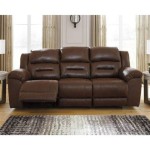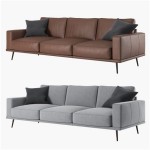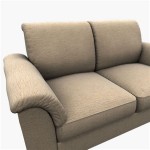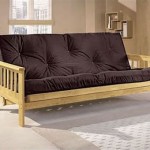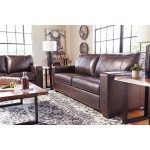How Tall Should A Lamp Be On A Sofa Table?
Selecting the correct lamp height for a sofa table is crucial for both aesthetics and functionality within a living space. A well-chosen lamp provides adequate lighting for reading and other activities, while also complementing the room's decor and creating a balanced visual appeal. Determining the ideal lamp height involves several factors, including the height of the sofa table, the overall scale of the room, and the intended use of the lamp.
The primary purpose of a sofa table lamp goes beyond mere illumination. It serves as a decorative accent, contributing to the ambiance and style of the room. A lamp that is too short may appear insignificant and fail to provide sufficient light, while a lamp that is too tall can overwhelm the space and create an unbalanced look. Achieving the right proportions is essential for creating a harmonious and inviting atmosphere.
This article will discuss the key considerations for determining the optimal lamp height for a sofa table, ensuring that the chosen lamp not only meets functional lighting needs but also enhances the overall design of the room.
Determining the Ideal Lamp Height: The 30-Inch Rule and Beyond
A common guideline for lamp height on a sofa table is the 30-inch rule. This rule suggests that the total height of the lamp (from base to the top of the lampshade) should be approximately 30 inches. However, this is just a starting point, and several other factors must be considered to determine the ideal height for a particular space.
The 30-inch rule is based on the average height of a sofa table, which is typically around 24 to 30 inches. When a 30-inch lamp is placed on a table of this height, the bottom of the lampshade will generally be at eye level when seated on the sofa. This placement provides comfortable and glare-free lighting for reading or other activities. However, deviations from this average sofa table height necessitate adjustments to the lamp height.
For example, if the sofa table is taller than 30 inches, a shorter lamp might be more appropriate to maintain the desired eye-level positioning of the lampshade. Conversely, if the table is shorter than 24 inches, a taller lamp may be necessary to achieve the same effect. It is important to measure the height of the sofa table accurately to inform the selection of the lamp height.
Beyond the 30-inch rule, the height of the sofa and the scale of the room also play a role. In a larger room with high ceilings, a taller lamp may be necessary to create a sense of presence and balance. A smaller lamp might get lost in the space and fail to make a visual impact. Similarly, a taller sofa may require a taller lamp to ensure that the light source is positioned appropriately for reading or other tasks.
Ultimately, the ideal lamp height is a matter of proportion and visual harmony. Consider the dimensions of the sofa table, the sofa, and the room as a whole to determine the height that best complements the space. Experimentation and observation are key to finding the perfect balance.
Considering the Lampshade: Size and Shape for Optimal Light Distribution
The lampshade is an integral component of a sofa table lamp, and its size and shape significantly impact the lamp's overall height and light distribution. The lampshade should be proportional to the base of the lamp and the size of the table, creating a balanced and aesthetically pleasing look. A lampshade that is too small can make the lamp appear top-heavy, while a lampshade that is too large can overwhelm the base and the table.
The diameter of the lampshade should generally be wider than the lamp's base. A good rule of thumb is to choose a lampshade that is approximately two-thirds of the width of the table it sits on. This proportion helps to visually anchor the lamp and prevent it from looking out of place.
The shape of the lampshade also affects the way light is distributed throughout the room. A wider lampshade will generally cast a broader pool of light, while a narrower lampshade will focus the light more narrowly. Consider the intended use of the lamp when selecting the lampshade shape. If the lamp is primarily for reading, a shade that directs light downward is ideal. If the lamp is intended to provide ambient lighting, a shade that allows light to diffuse more broadly is a better choice.
The material of the lampshade also influences the quality of light. Lighter-colored shades will allow more light to pass through, creating a brighter and more airy feel. Darker-colored shades will absorb more light, resulting in a softer and more intimate ambiance. The selection of the lampshade material should be guided by the desired effect and the overall style of the room.
Furthermore, the height of the lampshade can impact the overall perceived height of the lamp. A taller lampshade will make the lamp appear taller, while a shorter lampshade will make it appear shorter. This can be used to fine-tune the lamp's height to achieve the desired proportions within the space.
In summary, the lampshade plays a crucial role in determining the optimal lamp height and light distribution on a sofa table. Carefully consider the size, shape, and material of the lampshade to ensure that it complements the lamp base and enhances the overall aesthetic of the room.
Beyond Height: Style and Functionality Considerations
While height is a primary consideration when selecting a lamp for a sofa table, style and functionality are equally important. The lamp should complement the existing decor of the room and serve its intended purpose effectively. A lamp that is aesthetically pleasing but fails to provide adequate lighting or is difficult to operate is ultimately unsatisfactory.
The style of the lamp should align with the overall design aesthetic of the room. Whether the room is traditional, modern, or eclectic, the lamp should contribute to the cohesive look and feel. Consider the materials, finishes, and shapes of the lamp base and lampshade to ensure that they complement the existing furniture and accessories.
The functionality of the lamp is equally important. Consider the intended use of the lamp and select a model that meets those needs. If the lamp is primarily for reading, choose a model with an adjustable arm or a dimmer switch to allow for customized lighting. If the lamp is intended to provide ambient lighting, a model with a three-way switch or a decorative shade might be more appropriate.
The base of the lamp should be stable and well-proportioned to prevent tipping. The cord should be long enough to reach the nearest outlet without creating a tripping hazard. The switch should be easily accessible and user-friendly.
Furthermore, consider the size of the lamp base. A larger base can provide a more substantial presence, while a smaller base can be more discreet. The size of the base should be proportional to the size of the table and the overall scale of the room.
The choice of light bulb also impacts the functionality of the lamp. LED bulbs are energy-efficient and long-lasting, while incandescent bulbs provide a warmer and more traditional light. Select a light bulb that provides the desired level of brightness and color temperature for the intended use of the lamp.
In conclusion, selecting a lamp for a sofa table involves considering not only height but also style and functionality. By carefully considering these factors, one can choose a lamp that enhances the aesthetics of the room, provides adequate lighting, and meets their specific needs.

22 Living Room Lighting Rules You Need To Know Laurel Home

How Tall Should End Table Lamps Be

Scale Of Lamps On Sofa Console Table

Sofa Table Lamp Height How To Choose The Right One

Sofa Table Lamp Height How To Choose The Right One

Lamps On Sofa Table Design Ideas

How To Add Lighting Your Living Room Using Table Lamps La Z Boy Of Ottawa Kingston

Sofa Table Lamp Height How To Choose The Right One

How To Add Lighting Your Living Room Using Table Lamps La Z Boy Of Ottawa Kingston

Table Lamp Height Guide Our Best Tip For Choosing The Right Lamps Plus
Related Posts



